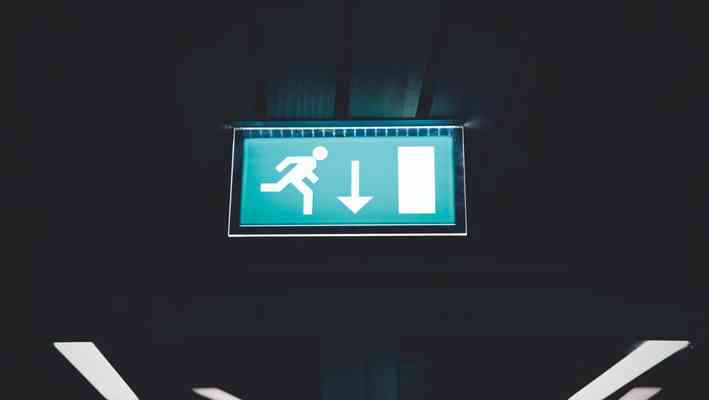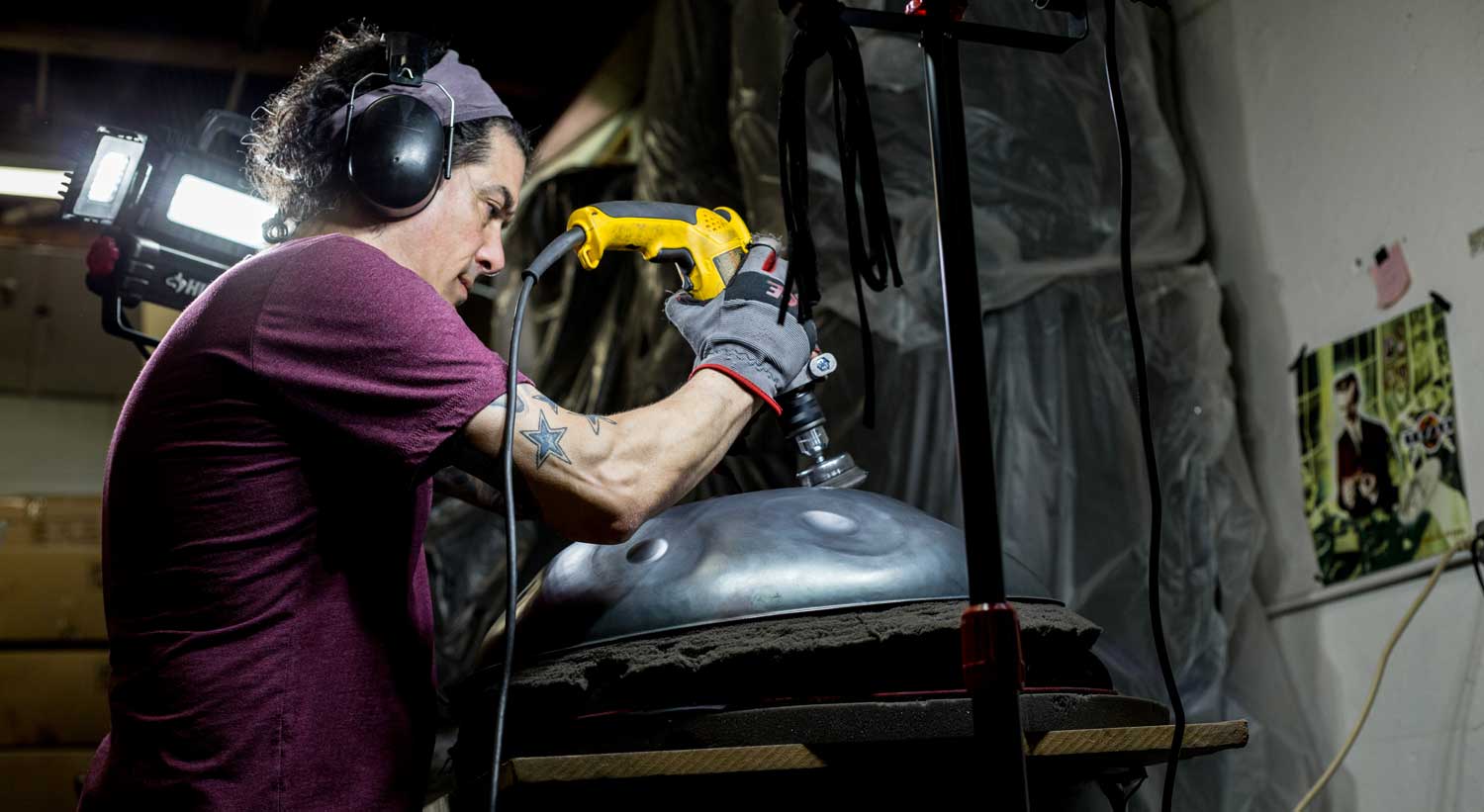What is emergency lighting?
Emergency lighting is lighting provided in the event of an emergency situation where a loss of power results in the failure of the normal illumination.
The loss of power to the normal illumination could occur due to fire or a power cut. This could potentially lead to sudden darkness and pose a potential danger to the occupants of the building.
Emergency lighting is required to operate fully automatically and give illumination of a sufficiently high level to enable all occupants to evacuate the premises safely. Most new buildings now have emergency lighting installed during construction; the design and type of equipment being specified by the architect in accordance with current Building Regulations and any local authority requirements.
The British Standard provides the emergency lighting designer with clear guidelines to work to. BS 5266-1: 2011 embraces residential hotels, clubs, hospitals, nursing homes, schools and colleges, licensed premises, offices, museums, shops, multi-storey dwellings, etc.
Although this standard recommends the types and durations of emergency lighting systems relating to each category of premises, it should be remembered that the standards are the minimum safety standards for these types of building and that a higher standard may be required for a particular installation.
Emergency Lighting is a general term which can be split into five main distinctions.
1) Emergency Escape Lighting is the lighting which provides sufficient illumination so that all occupants can evacuate in the event of an emergency situation, or attempt to terminate any potentially dangerous processes before evacuation. Emergency Escape Lighting is part of the fire safety provision of a building and a requirement of The Regulatory Reform (Fire Safety) Order 2005.
2) Standby lighting is lighting which enables normal activities to continue substantially unchanged. We won't cover standby lighting much more than this, as it is not a legal requirement and is a feature which may or may not be needed, and is dependant on the use of the premises.
3) Escape Route Lighting is lighting which ensures the means of escape can easily be identified.
4) Open Are or Anti-Panic lighting is part of the escape lighting system and provides enough illumination to allow occupants to reach an area where the means of escape can be identified.
5) High-risk Task area lighting is lighting which will provide sufficient illumination so that an operator can terminate a potentially dangerous process or carry out proper shut-down procedures before evacuating the premises.
What is Emergency Lighting? A Complete Guide for Commercial Lighting
It’s clear that climate change has reached a point where it can affect people’s daily lives. It has affected society by the increasing number of power outages from coast to coast.

In fact, emergency lighting has become a critical safety feature for many. The power outages from increasingly severe winters and summer storms mean it may be time to check and repair your lighting system.
At LITELUME, our goal is to help educate our end-users on emergency lighting so they can buy with confidence heading into 2022.
Keep reading to learn about emergency lighting systems and how it contributes to a building’s safety.
The Importance of Emergency Lighting
Life is showing signs of getting back to normal, and buildings are beginning to reopen. This means that property managers must ensure the building follows emergency lighting standards.
Whether it’s a residential or commercial property, these systems must follow regulations. Doing so helps keep everyone safe in the event of an emergency like a fire.
The system is in place to provide lighting for a safe escape when the main source of power fails. In these situations, a building without emergency lights can prove fatal to trapped inside.
Some systems wire directly into the main electrical supply. Others integrate a separate power source, like an emergency light battery. This guarantees light even when the main power supply shuts off.
Property managers and owners must conduct routine maintenance on their fixtures. Batteries have a notoriously short lifespan and must be constantly tested. In order to pass the test, batteries must be able to provide light for a minimum of 90 minutes in case of power failure.
Generally, a licensed professional must conduct these tests every six months. However, not all lights use batteries as a power source. The code only states that exit signs must remain illuminated. This means that you can use other sources of illumination like photoluminescence.
Is an Emergency Lighting System Necessary?
Buildings with public access or employees require an emergency lighting system. Some examples include office buildings, hospitals, terminals and places of worship.
Some properties don’t require an emergency lighting system. These are generally privately occupied residences. Essentially, places where the public cannot readily access them.
Types of Emergency Lighting
There are various broad categories of emergency lights. These include self-contained fixtures, central batteries and others named by their specific function.
Self-Contained
For example, you may come across LED emergency lights, which are self-contained fixtures. These lights come equipped with a built-in recharging circuit and rechargeable batteries.
Self-contained fixtures must remain at or near 100 percent charge. They must also wire directly to the main power supply.
Central Battery
A central battery emergency lighting system operates how it sounds. It delivers power to a central battery using fire-resistant cables. These systems are generally found in larger buildings like offices and hospitals.
These systems are either maintained or non-maintained. An example of a maintained fixture is an exit sign with an emergency light.
Maintained and Non-Maintained Fixtures
Maintained fixtures operate as normal lights but remain lit when there’s a power outage. Another example of this is the large square LED panels found in schools and office buildings.
These panels can operate in emergency situations because of a conversion kit. So when the main power supply is operational, the light can switch on and off. However, it automatically switches on when the main power supply dies.
On the other hand, non-maintained emergency lighting fixtures stay turned off as long as the main power supply is operational. They only turn on in the event of a power outage. The LED bulkheads found installed over doors in stairwells are a perfect example.
Other Types of Emergency Lighting Fixtures
The three other types include escape, standby and high-risk task lighting.
The purpose of escape lighting is to help people safely navigate out of a building in an emergency situation. You’ll find open area lighting fixtures and emergency signage within this type of system.
Open area fixtures serve as a lighting tool to help minimize panic. They also help people to follow their designated escape route. The purpose of emergency signage is to indicate the direction of each escape route. It also guides people by indicating whenever there’s a directional change.
Standby lighting fixtures aren’t a required emergency light source. However, they’re beneficial for situations that cannot experience a power outage. For example, many hospital operating rooms have installed standby lighting fixtures.
High-risk task fixtures serve to light areas where you must not have a power outage. Oftentimes, you’ll find these emergency lighting fixtures used with hazardous tasks.
Benefits of Emergency Lighting
While power outages in the past have been minimal, climate change has increased the odds. There are instances of more buildings experiencing an emergency situation. In addition to safety, these lighting fixtures come with several other key benefits.
The first is somewhat obvious. The most apparent benefit is that emergency lighting acts as a consistent light source. This helps to reduce panic and get everyone out of the building in a safe manner.
They also help reduce wasted time and costs. When there’s a power outage, productivity ultimately declines. The company must also spend potentially thousands in figuring out a solution. Additionally, the installation process is simple, and the fixtures follow fire regulations.
Emergency lights can also serve an economic purpose for commercial buildings and businesses. Some may find their insurance premium drop when installing emergency lights.
Modern emergency lighting fixtures typically use LED technology. This means they have significantly longer lifespans and are much more energy-efficient.
Keeping Your Building Safe – Contact LITELUME Today!
Having an emergency lighting system isn’t enough. Without routine maintenance and checkup by a licensed professional, the system is useless. It’s like purchasing a Porsche and having it sit in your garage collecting dust.
There’s no denying that an emergency lighting system is an investment. The best way to prolong your investment and get the greatest return is to use quality emergency lighting hardware.
Get in contact with our specialists to help make your property a safer and more prepared place.
Emergency Lighting! What is it and why do you need it? Battery Back Up Lighting
yes. These are required by code in almost every business establishment where there are employees or customers. Therequirements of the NFPA, within the Life Safety Code, are under section 7.9 reference. When needed, emergency illumination has to be offered for at least 90 minutes (1 hour 30 minutes) in case normal lighting fails. Sometimes this is limited to exit sign or escape routing but more commonly required in main overhead lighting and even external building wall lights.

In big offices and buildings, emergency light systems are installed properly with the aid of electricians. There are laws about proper emergency life-saving lights for safe evacuation, following these laws is a must. Otherwise, action can be taken by the government against such project builders for non-compliance, nevermind the lawsuits that would follow in the event of injury or death for not providing proper safety lighting.
It is important to check the local safety requirements and building codes for your region. You can get the necessary information from the office of engineers in your county or city. Generally, a specific amount of brightness is needed from these lights – which is about 10 lux. However, as requirements tend to vary across areas, it is important for you to know about the requirements in your locality.
How Do Emergency Lights Work?
A: Emergency lights use power supply from a battery inside the light fixture and turn on when the supply to external source of power is lost. These batteries charge during normal power. Typically they produce a lower level of illumination compared to the light level during normal conditions. Generally, the brightness is 10% to 20% of typical, which can extend how long the light would work while drawing power from the battery. Many battery back up lights are also intelligent and can distinguish from power turned off vs power failure and come equipped with testing buttons or methods to ensure proper function and battery condition
These lights are generally powered by two types of illumination technologies, which include: These lights are generally powered by two types of illumination technologies, which include:
• Fluorescent - Fluorescent lamps are available in different sizes, and the affordable ones consume more power and require larger batteries and therefore more cumbersome fixtures. These have largely made way for LED
• LED – Customers can get the best light output from these illuminates. These lights consume a minimal amount of power and the emergency battery can be smaller for a more compact fixture. Due to the greater efficiency of the LEDs versus a fluorescent lamp power usage even in normal conditions will be considerably less and keep the energy bill down.
Some of the emergency illuminates are designed to be activated only when there is no power. These are generally in the shape of a battery pack having a couple of small lights on either side. Some people call these “bug-eye” lights due to their appearance.
Emergency Light Testing
According to fire code requirements, emergency lights must be tested and maintained regularly to make them last and ensure they will work when an emergency arises. Emergency lights testing requirements are below:
A minimum of 30 seconds every month
Full 90 minutes every year
Written documentation of how to test and test logs should be kept
Easy Light Testing
Most of these lights are designed to be tested easily.
• A few of these consist of a test button that can simulate the situation of a power outage and activate the light.
• Others comprise of a sensor that can put the light in a test mode, when the sensor has a laser pointer directed towards it.
• A few are self-testing lights comprising of an indicator light that will notify if the light is not passing the regular monthly tests.
• Some of the older lights might lack these, and power supply to the fixture has to be switched off for testing purposes.
An emergency lighting system should always be tested and serviced by a skilled electrician, given that it is necessary to simulate a failure of the mains power on the standard lighting circuit. It can compel the emergency light system to be switched on with the help of power from a backup battery.


![31 Best IPTV Services for FireStick, Android TV, PC [Dec 2021]](https://www.lampsofbible.com/storage/upload/Images/_1639646173_nXrO23JGnM.jpg)





